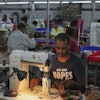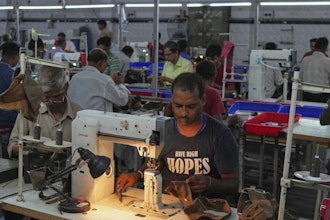BEIJING (AP) – Nearly one-fifth of products made in China for domestic consumption failed quality and safety standards, the government said, while a state-run newspaper on Wednesday stressed the need to raise quality guidelines to meet international levels.
China's dismal product safety record—both within and outside its borders—has increasingly come to light both in the local and foreign media as goods make their way through global markets. Major buyers such as the United States, Japan, and the European Union have pushed Beijing to improve inspections.
In the first half of 2007, 19.1 percent of products made for domestic consumption were found to be substandard, China's General Administration of Quality Supervision, Inspection and Quarantine said in a statement posted on its Web site late Tuesday.
Canned and preserved fruit and dried fish were the most problematic, primarily because of excessive bacteria and additives, the agency said.
Though the survey covered many different products, it focused on food, common consumer goods, farming machinery and fertilizers.
Fears that China's chronic food safety problems were going global surfaced earlier this year with the deaths of dogs and cats in North America blamed on pet food containing Chinese wheat gluten tainted with the chemical melamine.
U.S. authorities have also turned away or recalled toxic fish, juice containing unsafe color additives and popular toy trains decorated with lead paint. Chinese-made toothpaste has been banned by numerous countries for containing diethyleneglycol, a toxic ingredient often found in antifreeze.
In an editorial Wednesday, the state-run China Daily newspaper said food exported by China sometimes did not meet standards of importing countries because of a difference in quality guidelines.
''This is not because the food itself was of low quality but because the standards we use may be lower,'' the editorial said. ''It is becoming increasingly urgent to raise the food safety standards to international levels.''
The official Xinhua News Agency quoted a top agency official as saying there were few problems with food exported to the U.S.
''Ninety-nine percent of food exported to the United States was up to safety standards over the past two years, which is a very high percentage,'' Li Yuanping, who is in charge of imported and exported food safety, was quoted as saying.
Yet, Chinese products continued being blocked, banned or recalled in the United States. Most recently, the FDA said it would detain Chinese catfish, basa and dace, as well as shrimp and eel after repeated testing turned up contamination with drugs that have not been approved in the U.S. for use in farmed seafood.
In response, China's Administration of Quality Supervision, Inspection and Quarantine issued a number of new measures designed to ensure the quality of exported farmed seafood, telling its local bureaus to ''fully understand the side effects and major loss of the U.S. decision to the Chinese seafood industry.''
Besides stepped-up inspections and quarantine, the agency said it would post on its Web site the names of companies that violate regulations and ban them from export activities for two years.
Beijing has also taken other steps to clean up safety problems. Inspectors recently announced they had closed 180 food factories in China in the first half of this year and seized tons of candy, pickles, crackers and seafoodtainted with formaldehyde, illegal dyes and industrial wax.
Authorities said most of the offending manufacturers were small, unlicensed food plants with fewer than 10 employees. State media has reported that 75 percent of the country's estimated 1 million food processing plants are small and privately owned.
According to the survey released Tuesday, more than 93 percent of products made by large companies met standards, while only about 73 percent of products made by small companies met standards. The agency did not say how it defined the size of the companies.


















